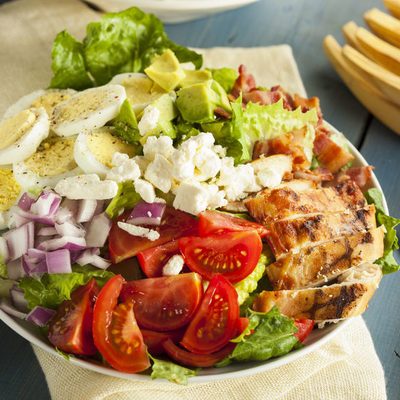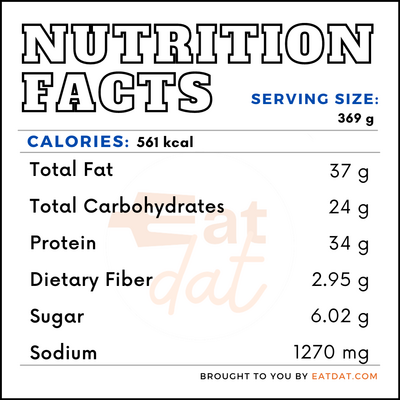
Cobb Salad
What is a cobb salad?
America’s favorite salad. It’s almost a meal by itself, and can be found in many American sit-in diners.
- It is a staple in most American restaurants today.
- The typical salad is arranged in layers with the different ingredients and presents a symmetrical appearance.
This salad is an American dish that typically contains the following ingredients:
- Lettuce
- Watercress
- Endives
- Romaine Lettuce
- Tomatoes
- Boiled eggs
- Avocados
- Corn
- Cheese
- Chicken
- Bacon
Origin
The invention of Cobb Salad is attributed to Robert Howard Cobb, the owner of Brown Derby restaurant in Los Angeles in the 1930s. However, it is uncertain whether the dish was invented by him or by his chef. After a hard day’s work, there wasn’t much left in the kitchen, so Cobb (or his chef) mixed together some leftovers and made a salad with olive oil, salt, pepper, red vinegar, Worcestershire sauce, lemon juice, and garlic as seasoning. Today, this salad is a national favorite and the mainstay of many restaurants.
Nutrition
A 369 g serving of cobb salad can contain:

Why eat cobb salad?
This dish is an American favorite, and for good reason. There are many reasons to love a it.
- A plate can be a full meal in itself. It is filling and healthy.
- It is packed with proteins in the form of bacon, chicken, eggs, etc.
- It has enough fiber since you can put different types of lettuce in the same dish. The greens also provide essential vitamins.
- Avocados are also good for health and provide a wide range of benefits for the human body.
- Blue cheese, commonly used in this salad, is a good source of phosphorus as well as healthy fats, protein, and calcium.
Here are ways of making this dish:
FDA regulations
Whilthis is not regulated by the FDA, salad dressings are. There are strict instructions on what may or may not be used. Packaging of salad materials is also regulated by this regulation. The FDA also regulates the leafy greens that are a part it. The FDA does not regulate bacon, an integral part of the dish, but USDA does regulate safety, dating, packaging and other aspects of bacon marketing and production.
References
Taste Atlas, Cobb Salad
https://www.tasteatlas.com/cobb-salad
Editors of Cooking Light Magazine (2013), Cooking Light Lighten Up America: Favorite American Foods Made Guilt-Free.
